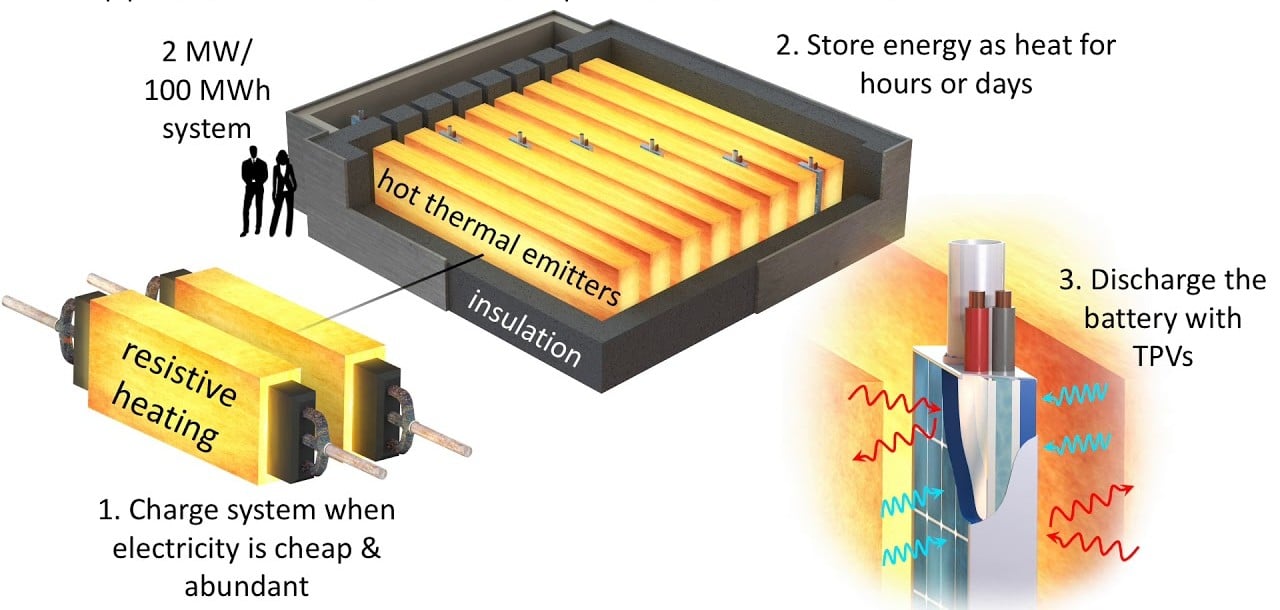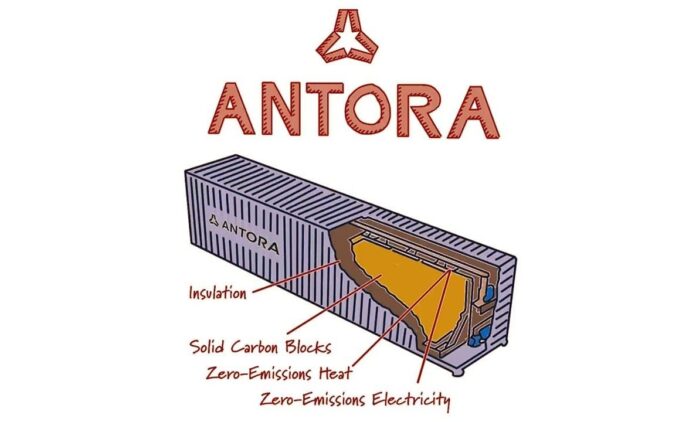The single largest driver of climate change, industry, accounts for about ⅓ of global carbon emissions. But a Bill Gates-backed startup, Antora Energy Inc., offers a potential solution to eliminate over 50% of industrial emissions with its unique approach to decarbonizing the sector – thermal energy storage via solid carbon blocks.
Industry has been considered a hard-to-abate sector due to the very nature of their energy-hungry and heat-intensive processes. This is what the startup Antora Energy, a company supported by billionaire Bill Gates’ Breakthrough Energy Ventures, tries to address.
Antora has launched its groundbreaking commercial-scale thermal battery system in Fresno, California, with a slated technology delivery target of 2025.
What is Thermal Energy Storage?
Almost every industrial facility needs heat to do its daily grind: to melt, cure, dry, cook, treat, calcine, among others. This heat accounts for ⅔ of all industrial energy use and the bulk of the sector’s emissions.
- In the United States, the industry accounts for about ¼ of the country’s total greenhouse gas emissions in 2021.
Energy experts believe that if the world can solve the challenge of clean energy for heavy-emitting industries, it would pave the way for rapid industrial decarbonization.
Enter thermal energy storage or TES. Powered by renewable energy, TES can help decarbonize industrial heat in significant amounts.
Thermal energy storage enables companies to store heat using low-cost, scalable, and ample materials. It allows for the use of renewable energy when it’s cheapest, meaning when the wind blows or the sun shines. The solar or wind energy heats up a thermal battery, which is then stored for hours or days.

Thermal batteries are cheap to assemble, easy to maintain, and work for decades. Moreover, they don’t use expensive and limited materials, but abundant and cheap materials like carbon and concrete. They could provide the much-needed storage that can make renewable power available year-round.
The International Renewable Energy Agency (IRENA) estimates that TES would facilitate increased use of renewables in energy systems. With it, operators can effectively match energy demand and supply, making the system more efficient, flexible, and cheap.
Solid carbon, in particular, is available cheaply and comes with a vast supply chain of >30 million tons annually. Plus, it can store and emit huge amounts of heat at very high temperatures. This is what Antora Energy’s storage system is using.
Antora Energy’s Innovative Thermal Energy Storage
Co-founded by an MIT alumnus, David Bierman, Antora Energy leverages the power of nature, sun and wind, to provide low-cost and highly-efficient energy storage. Their thermal energy system stores electricity as heat to enable manufacturers and energy-intensive industrial processes to stop fossil fuel consumption. According to Bierman,
“The economic opportunity has grown, but more importantly the awareness from industries that they need to decarbonize is totally different. Antora can help with that, so we’re scaling up as rapidly as possible to meet the demand we see in the market.”
Different from traditional lithium-ion batteries, Antora’s thermal battery stores energy as heat within solid carbon blocks. It offers an eco-friendly solution for industries like cement and steel manufacturing that heavily rely on fossil fuels.
The company’s TES stores energy as heat in the blocks at extremely high temperatures, exceeding 1,800°C! It can then be used directly as heat or converted back to electricity via thermophotovoltaic (TPV) cells, similar to solar cells.
The building blocks can be configured to meet any load and their compact footprint enables seamless site integration.
Antora’s modular thermal energy storage turns solar and wind energy into dispatchable, zero-emissions heat and power. This can help companies operating in the industry to reduce their Scope 1 and 2 emissions.
While Antora forges ahead with this innovative approach, other startups are also making strides in the battery sector. Their approaches may differ but they all aim to eliminate or lessen the environmental impact of batteries while providing eco-friendly energy storage.
In fact, in the recent surge of venture capital, battery startups are making waves and attracting significant investments. One area of investor’s focus is optimizing renewable energy’s grid storage, which Antora Energy seeks to deliver.
- READ MORE: Battery Startups Attract Mega-Investments
Antora’s upcoming battery production site in the Bay Area, set to be completed by 2024, presents economic challenges more than technological ones; the venture requires significant capital. Overcoming these obstacles could pave the way for a transformative shift in the energy sector.
A Shift Towards Zero-Carbon Solutions
Antora’s thermal energy storage aims to provide an end result of a zero-carbon, flexible heat and power system for industry.
The company’s unique dual function of providing heat and electricity without carbon emissions presents a vital alternative for industries currently reliant on non-continuous renewable sources, essential for meeting decarbonization goals.
The energy storage company targets sectors relying on consistent heat and power for their plants, eyeing a substantial share of the $60 billion U.S. market. Market segments include cement, steel, chemicals, oil, and gas refining.
The company is targeting clients in windy and sunny states where renewable energy is abundant and cheap. With that, Antora aims to eventually outcompete fossil fuels on cost, potentially revolutionizing the energy industry. This innovation promises a significant step forward in the battle against climate change in carbon-intensive industries.










